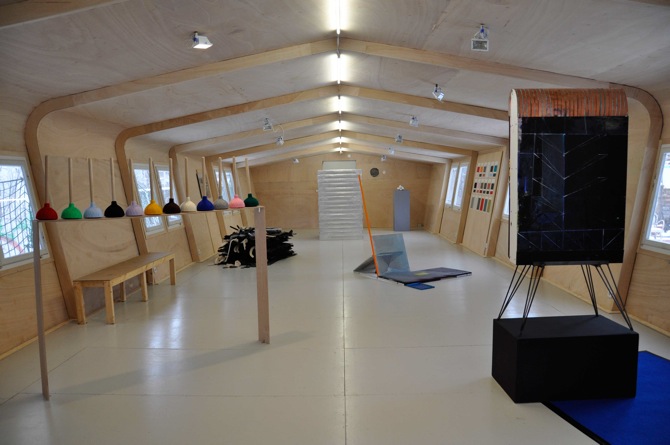
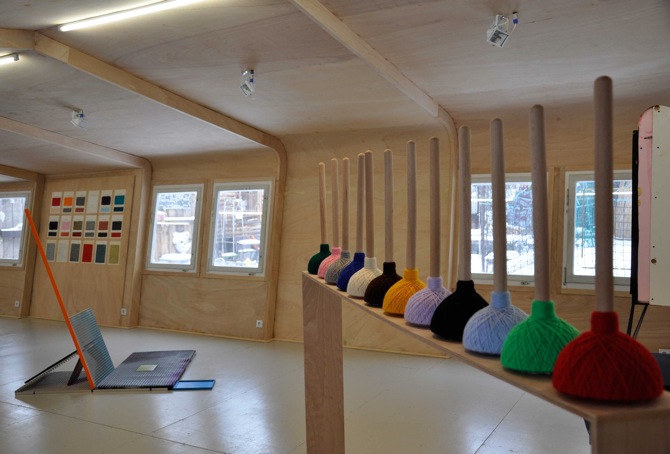


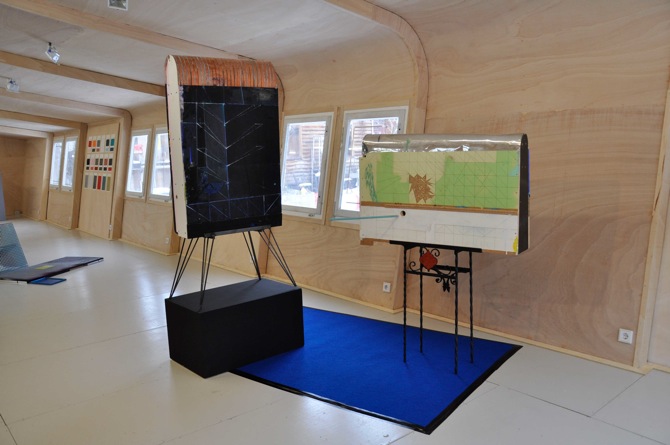

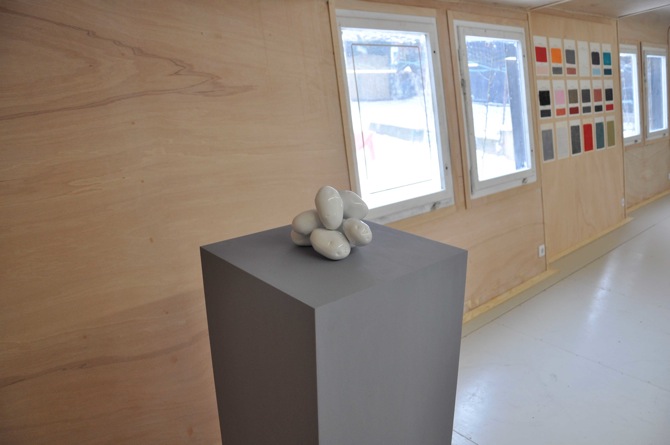
all images: courtesy REH Kunst 2013
In the past decades, the issue of garbage has become a significant problem: As with every aspect of abundance, it has become too much. Along with the increase of waste and dissipation, ideas of recycling and upcycling established. And where could these methods find a better discussion platform, than in the arts? Taking the satirical German saying "Ist das Kunst oder kann das weg?" (Is this art, or should I clean it up?) quite literally, the current group exhibition "Re/made - Re/used" at the project space REH Kunst in Berlin approaches questions on value and usage.
All seven artist explore techniques of re-purposing and re-invention by adding, withdrawing and changing the initial material: Philipp Ricklefs made a white and three-dimensional print of potatoes, presented as a hill of magnetic objects placed on a grey plinth. By wrapping bright coloured woolen knitting-yarn around twelve sink plungers, also Lars Bjerre elevates a banal object into an beautiful and aesthetic piece of art that lost its initial purpose. Also Marija Stanković employs colours to redifine ordinary printed forms as a basic artistic material that replaces plain white paper. 18 papers, placed neatly on the wooden wall, thus produce a beautiful line-up.
For his two half-ellipse shaped sculptures, which remind of a piece of furniture from the 60s, Christian Henkel repeatedly explores a similar geometric shape by fusing and bonding material that he found on the streets into a three dimensional collage. Collage techniques are also employed in the site-specific installation by Surya Gied, who turned rough materials, as grids, frames and wooden panels, into a fragile construction. Madeline Stillwell plays with the balance of fragility and roughness, too, by layering roof-membranes and glass on top of each other. Moritz Hirsch's minimalist sculpture, for which he stapled 16 steel sheets that he wrapped with silver packaging material, appears like a dedication to the raw and redefined material.
Aiming to present artistic strategies of re-contextualization and reinterpretation of everyday objects, the three curators Valeska Hageney, Laura Haaber Ihle and Marie Arleth Skov very much succeeded with a show that proves how beautiful and glamourous recycling can be.
14.3.2013 – 23.3.2013
with Lars Bjerre, Surya Gied, Christian Henkel, Moritz Hirsch,
Philipp Ricklefs, Marija Stanković and Madeline Stillwell
REH KUNST
Kopenhagener Strasse 17
10437 Berlin
Opening Hours: Thu, Fr, Sa, 14-19h and by appointment
info@reh-kunst.de
About Reh Kunst: "The exhibition space itself – the GDR Raumerweiterungshalle (REH, literally, space-extending building) – is a construction originally made for another purpose and context, which is now being re-used as an art and project space. REH refers to a modular architectonic system whose individual elements can be telescopically extended to form a multi-functional space that remains transportable despite its solid roof, floor, and walls. The REH was a part of everyday life in East Germany and long helped shape its architectural landscape."
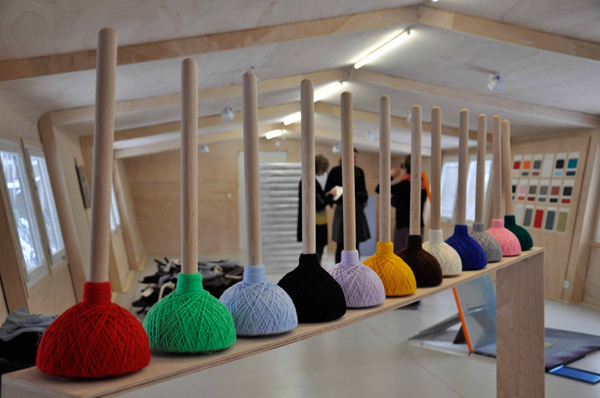
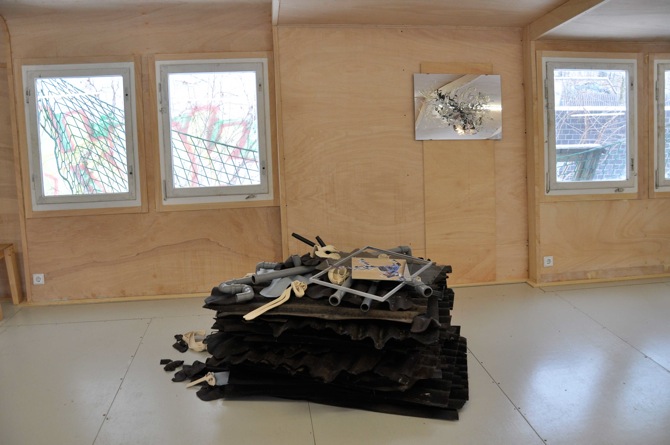
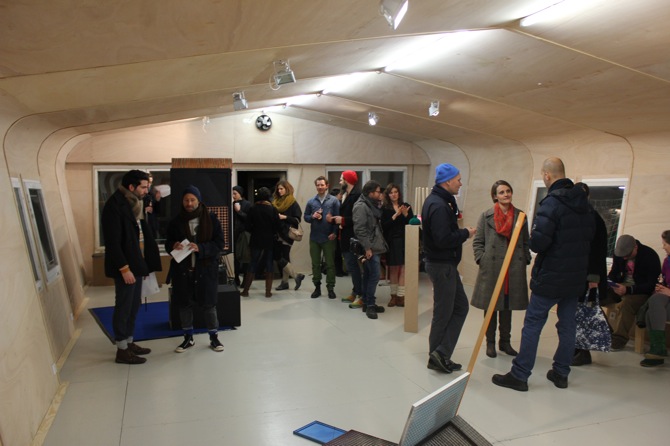
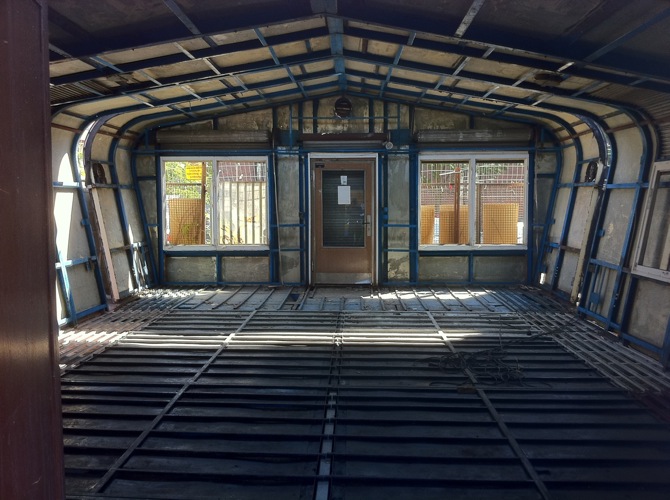
opening picture: by artfridge, last image: REH Kunst Archiv, all other images: courtesy REH Kunst 2013
